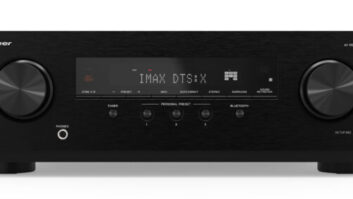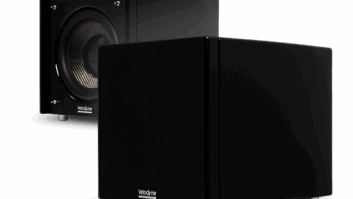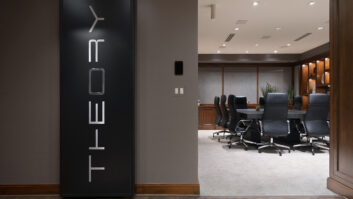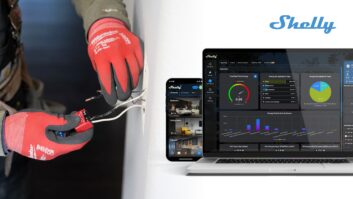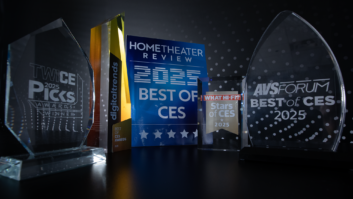INDIANAPOLIS — The market for multiroom A/V systems and hard-drive audio servers got a little more crowded at the CEDIA Expo, where suppliers also expanded the selection of products that reproduce 6.1-channel movie soundtracks.
The latest companies to enter the distributed-audio market were SpeakerCraft and Mordaunt-Short, which demonstrated a distributed-A/V system.
For its part, Linn became the first audio company to launch a hard-drive audio server for multizone distributed-audio systems. And new 6.1-channel products were shown by Denon, Marantz, Parasound and Sony, among others. Rotel promised its first 6.1 products in January.
More distributed-A/V companies also moved audio amplification out of the central A/V rack and into the rooms where their companion in-wall speakers are installed.
The companies’ intent, in part, is to counter the loss of power and fidelity that comes with long runs of speaker wire. Mordaunt Short took that approach in its Opus system, as did active-speaker specialist Genelec, which launched its first active in-walls (see story below).
Last year, Crestron introduced local amplification as part of its distributed-audio introduction last year. B&W’s CASA system also uses in-wall speakers with integral amps.
Here are some details on these and other Expo developments:
Distributed-audio systems: Speaker maker Mordaunt Short’s planned distributed-A/V system, due in mid-2001, is a four-zone system expandable to 24 zones, each zone with a separate subzone in which control of volume and balance is independent of the main zone. Like Mordaunt enclosed speakers, it would be marketed through Denon.
Named Opus and positioned as an expandable midprice system, it will include Mordaunt in-wall speakers, a main control unit with RDS tuner, and high-efficiency 12-volt local-zone integrated amps, which will include local inputs for switching local video sources. A single cable will carry control signals, low-voltage power, and balanced line-level audio to each local-zone amp/preamp.
A three-zone system with Mordaunt speakers, keypads and cable is estimated to cost $5,000, excluding installation.
Like Mordaunt, SpeakerCraft is diversifying by adding its first distributed-audio system, designed as a simplified system that lowers the category’s cost-of-entry. It consists of a six-source, six-zone preamp and six handheld IR remotes. The system, retailing for $500, must be integrated with other companies’ in-wall IR repeater systems. It is also compatible with other companies’ in-wall keypads.
SpeakerCraft, which is in an acquisition mode, wants to become a one-stop shop for installers and recently expanded its custom-amp selection. In its future, it sees A/V source units and subsystems such as lighting controls.
Other new multizone products were shown by Russound and ADA.
ADA unveiled plug-in 900MHz RF modules that make it unnecessary to run control-signal wiring to its in-wall A/V keypads. The intent is to simplify installs in which concrete or brick walls, floors or vaulted ceilings complicate control-wire runs. The module and keypads get low-voltage power locally from an adapter that plugs into an electrical outlet.
The RF module will also come in handy in the event a behind-the-wall control wire breaks after installation, making it unnecessary to find and repair the break, the company said.
ADA also showed its first touchscreen control panel, which is also the industry’s first based on Windows CE. The TS-4000 will be available for in-wall mounting and in an RF-wireless tabletop model that plugs into an electrical outlet for power. January shipments are targeted.
For its part, Russound launched its new Russound Technologies series, which will feature the company’s most advanced products. They will be marketed only through specialty A/V retailers and custom installers with showrooms to demonstrate the product.
Sometime next year the series will likely include products incorporating Pragmatic Technology’s digital encode-decode technology, which sends line-level audio, DVD-quality video and control signals up to 1,000 feet over CAT 5.
The series’ first product, the $3,600-suggested-retail CP 4.6, is a four-zone, six-source A/V control preamp due in November. It’s compatible with the Russound’s A-BUS in-wall keypads, which come with built-in audio amplifiers. The CP 4.6 also distributes video from cable boxes and DVD players to multiple TVs or multiple monitors that lack video tuners. It also routes composite video so a TV can display the menus from remote megachangers.
Audio servers: Underscoring the PC industry’s impact on the custom industry, Linn became the first well-established audio company to launch a hard-drive audio server for multizone distributed-audio systems.
The Linux-based device, with a dealer cost of $10,000, is positioned as a high-end server capable of storing uncompressed CD audio because of its prodigious storage capacity: two 75GB hard drives and room for two more. It also plays MP3 files.
Other servers, most of them multizone, were shown by Arrakis, Imerge, Lansonic and Lydstrom.
Linn’s Knekt Kivor delivers up to 16 different songs simultaneously to up to 128 zones and can be controlled from in-wall keypads sold as part of the company’s Linn Knekt Intersekt multiroom system. It can also be integrated with other brands of distributed audio systems.
The product incorporates CD recorder, offers 6x ripping speed, and features Escient technology to tap into the CDDB website to download the names of all stored songs.
It ships with outboard eight-channel DAC and is due in early November.
6.1-channel decoding: Denon introduced its second receiver equipped with DTS ES Discrete and Matrix decoding, but at a much lower price point of a suggested $1,199. It’s also compatible with Dolby Digital Surround EX soundtracks. It’s not THX-certified.
Marantz, on the other hand, showed its second THX Ultra-certified receiver, the SR-18EX, with THX EX decoding. Both are compatible with DTS ES Matrix.
For its part, Parasound will give owners of 5.1-channel receivers the opportunity to play back 6.1-channel movie soundtracks. The 6.1 Center Surround Expander can be jacked into the surround-speaker line-level outputs of a 5.1-channel receiver to provide THX EX and DTS ES compatibility. It’s due in October or November at $350 and features subwoofer output.
Sony unveiled its ES series receiver line, consisting of three models that are the first ES receivers compatible with Dolby Digital Surround EX and DTS ES Matrix soundtracks. They deliver a phantom rear-center channel. They come with five-channel amp and lack a preamp output for a dedicated rear-center channel speaker. They’re available at an everyday $800 to $1,300.





